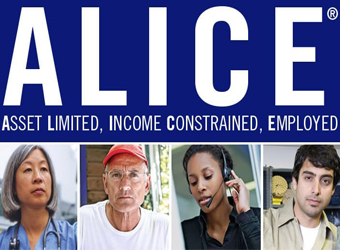 The latest United Way ALICE Report provides the most comprehensive look at the segment of Florida’s population that is working hard but barely making ends meet.
The latest United Way ALICE Report provides the most comprehensive look at the segment of Florida’s population that is working hard but barely making ends meet.
ALICE stands for Asset Limited, Income Constrained, Employed. These residents earn more than the federal poverty level, but less than it takes to survive in their community.
The United Way ALICE Report is part of a larger initiative, known as the ALICE Project, taken on by United Ways in 16 states (including Florida), and the report was recently updated to include data from 2016. The Report describes the cost of basic needs for each county in Florida and focuses on how households have fared since the Great Recession ended in 2010.
According to the report, 46% of Florida’s households could not afford basic needs such as housing, child care, food, transportation, health care, and technology in 2016. That figure is up from 44% of Florida households in 2015.
Within that 46% of Florida households not able to afford basic needs, 14% lived in poverty in 2016 while 32% were ALICE. Compared to 2015 — when ALICE households comprised 29.5% of households and 14.5% were living in poverty — the number of Floridians living in poverty has decreased slightly while ALICE households has grown by 3.5 percentage points.
And while the percentage of jobs in Florida that pay less than $20 per hour remained the same (67%), there has been an increase in contract and on-demand jobs that is leading to less financial stability, according to the report.
The ALICE Project released the first Florida report in 2014. After publishing a second Florida report in 2017, the project collaborated with research partners at Rutgers University to complete this latest update, which allows users to download ALICE data by zip code. The United Way also has ALICE profiles for each Florida county.
FCAN recently hosted a webinar titled, “Meet ALICE: A Look at Florida’s Financially Struggling Population and How Communities Are Using Data For Change” which outlines some of the ways communities throughout the state are using ALICE data to inform their work and better serve their residents. That includes using ALICE in conversations with employers and the business community to help set local wages to a livable threshold and with service providers to redesign program eligibility criteria.
